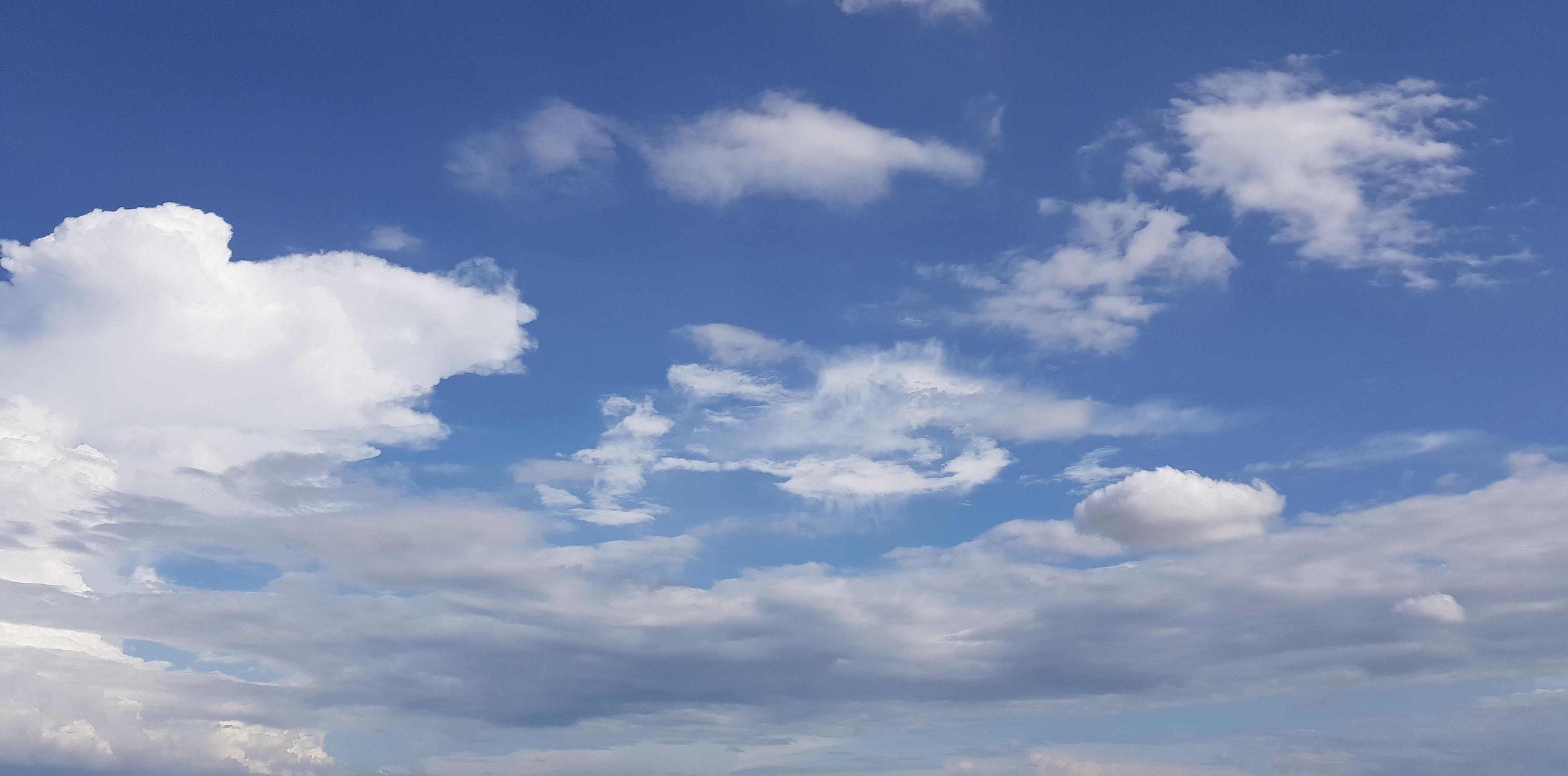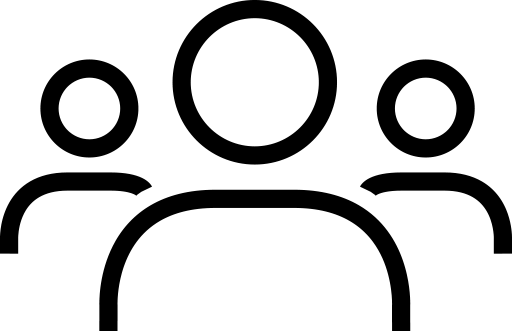Gas is cheap but nobody’s filling up.
Houses are full but streets are empty.
Businesses are dying while others can hardly keep up.
We’ve gone from juggling millions of things to the experiential austerity of the 19th century only with wifi.
This is our new normal.
It happened so quickly and so drastically we talk about time in new ways. Language like “Quarantine Day 15” or “Virus Day 85” to acknowledge the before and afterness.
How high will the days count before we go back to the old calendar?
Will we go back?
I HATE BEING QUARANTINED
— NOT A WOLF (@SICKOFWOLVES) March 17, 2020
STUCK IN ONE STUPID BUILDING ALL THE TIME
I WOULD RATHER GO BETWEEN THE SAME TWO OR THREE BUILDINGS REPEATEDLY DOING THE SAME ACTIVITIES IN AN ALMOST IDENTICAL ORDER
NOW THATS LIVING
Functioning in a crisis
The state we’re in now is one of crisis.
In a crisis reality changes. The normal ways stop working. You must match the strangeness of the situation with changes of your own.
We all react to a crisis. It’s another thing to act in a crisis. Everybody runs in an alien invasion. But while most people run from the aliens, a much smaller number run toward something with a plan in mind. The difference between those groups is their degree of awareness.
Everyone has a passive awareness of the world. This is the instinctual, System 1 thinking that helps us respond to our needs on a moment to moment basis.
A smaller number of people develop what I’ll call an active awareness. By this I mean consciously operating within a broader arena than their immediate desires. Having an active awareness means being able to see the bigger picture, think conceptually about future events, and consider the needs of others. An active awareness creates a larger perimeter of self-interest.
We all move through life with a passive awareness. An active awareness is something that has to be cultivated. Through experience, structured thinking, meditation, or other methods of self-reflection.
To grow my own active awareness I use the “bento” framework, an acronym for BEyond Near Term Orientation. It’s a simple 2x2 chart (or bento box) that breaks life into four dimensions, each representing a different space of my self-interest.
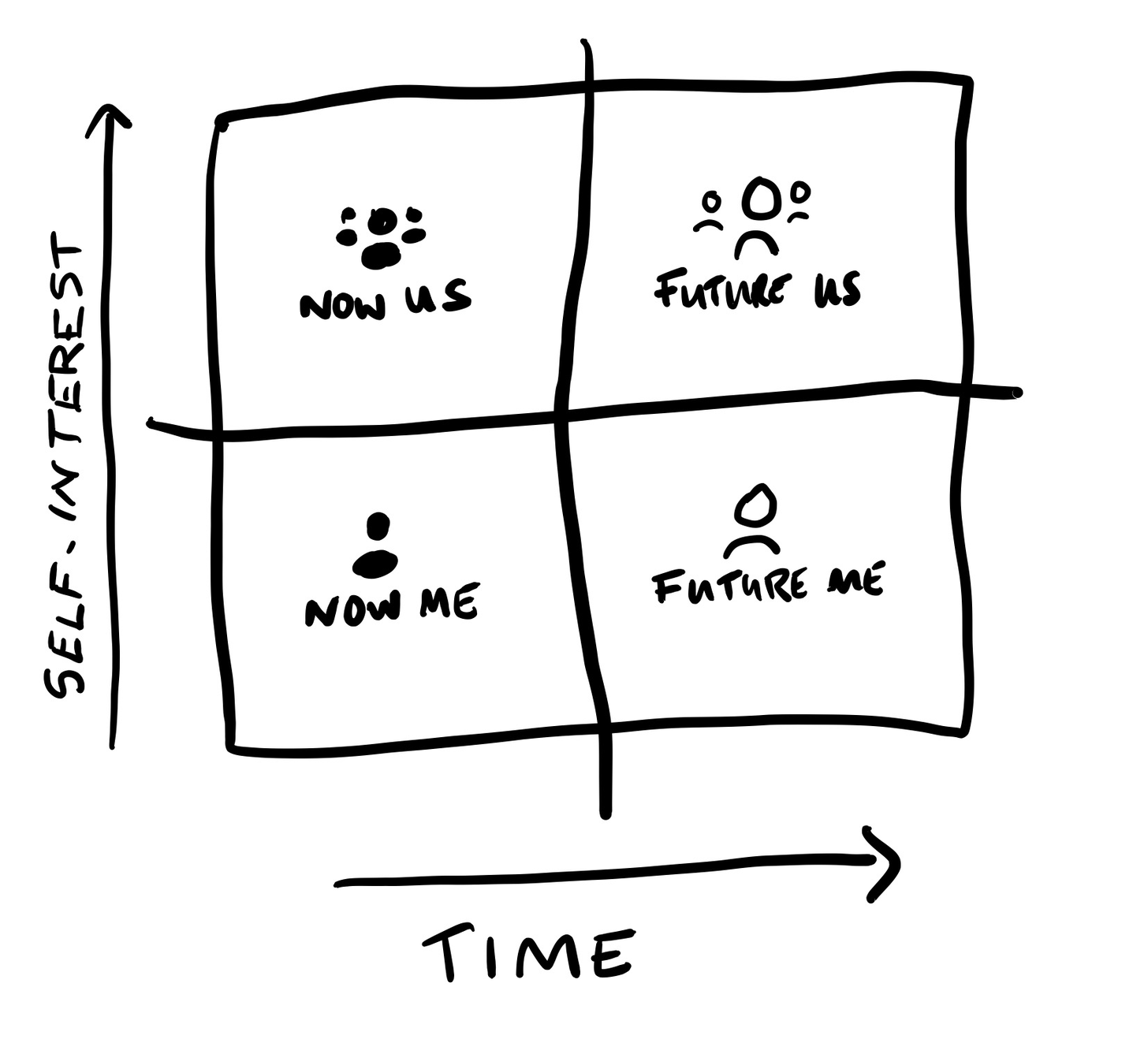
Now Me is what I want and need right now.
Now Us is what the people closest to me want and need right now.
Future Me is what the older, wiser version of myself wants me to do — my inner Obi-Wan Kenobi.
Future Us is the world the people I love and care about — kids especially — will inherit.
My choices impact each of these spaces. Each of these spaces is in my self-interest. But most of us struggle to see the whole picture on a consistent basis. Myself included.
A passive awareness means being aware of just part of the picture:
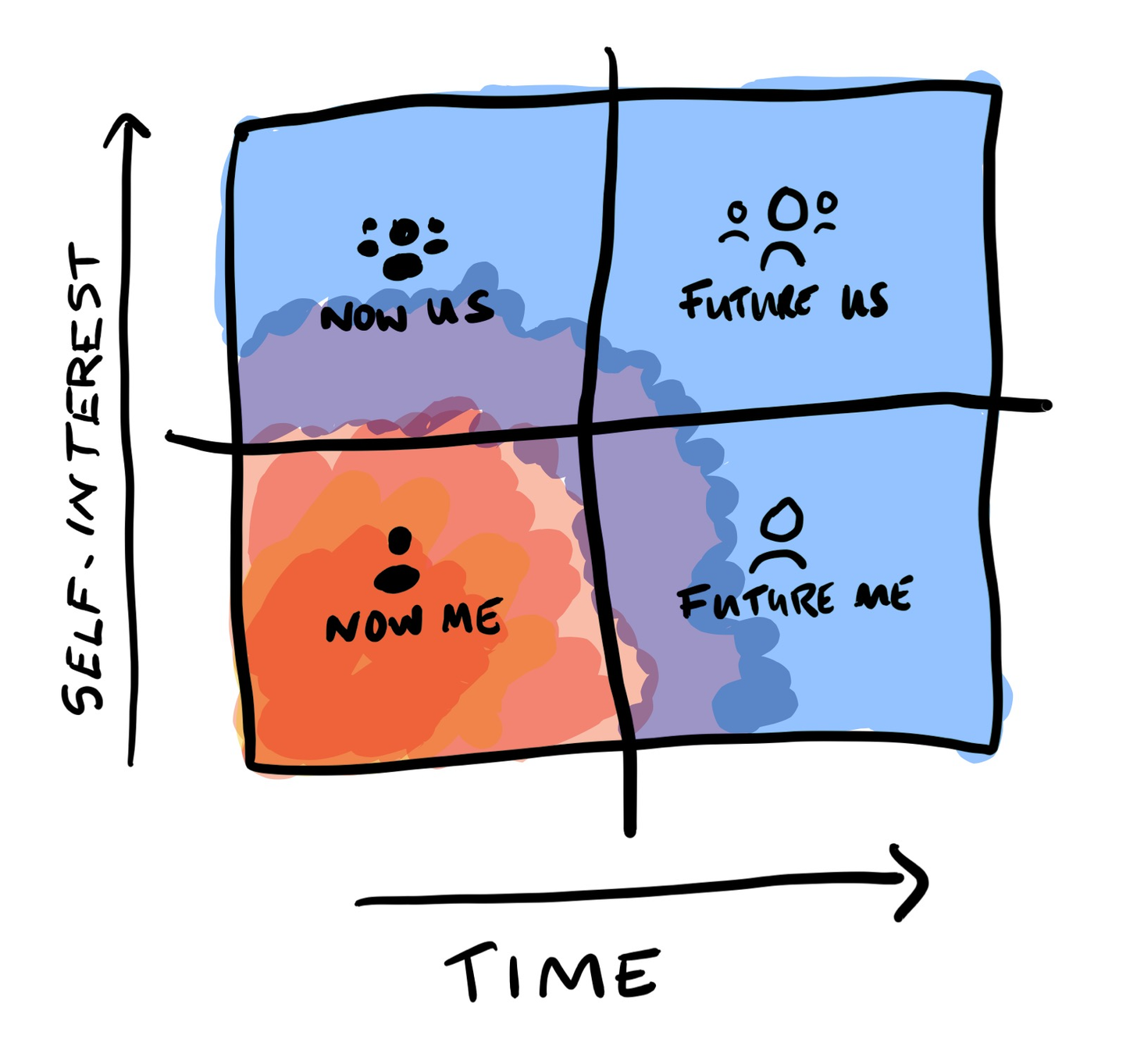
An active awareness means seeing the whole thing.
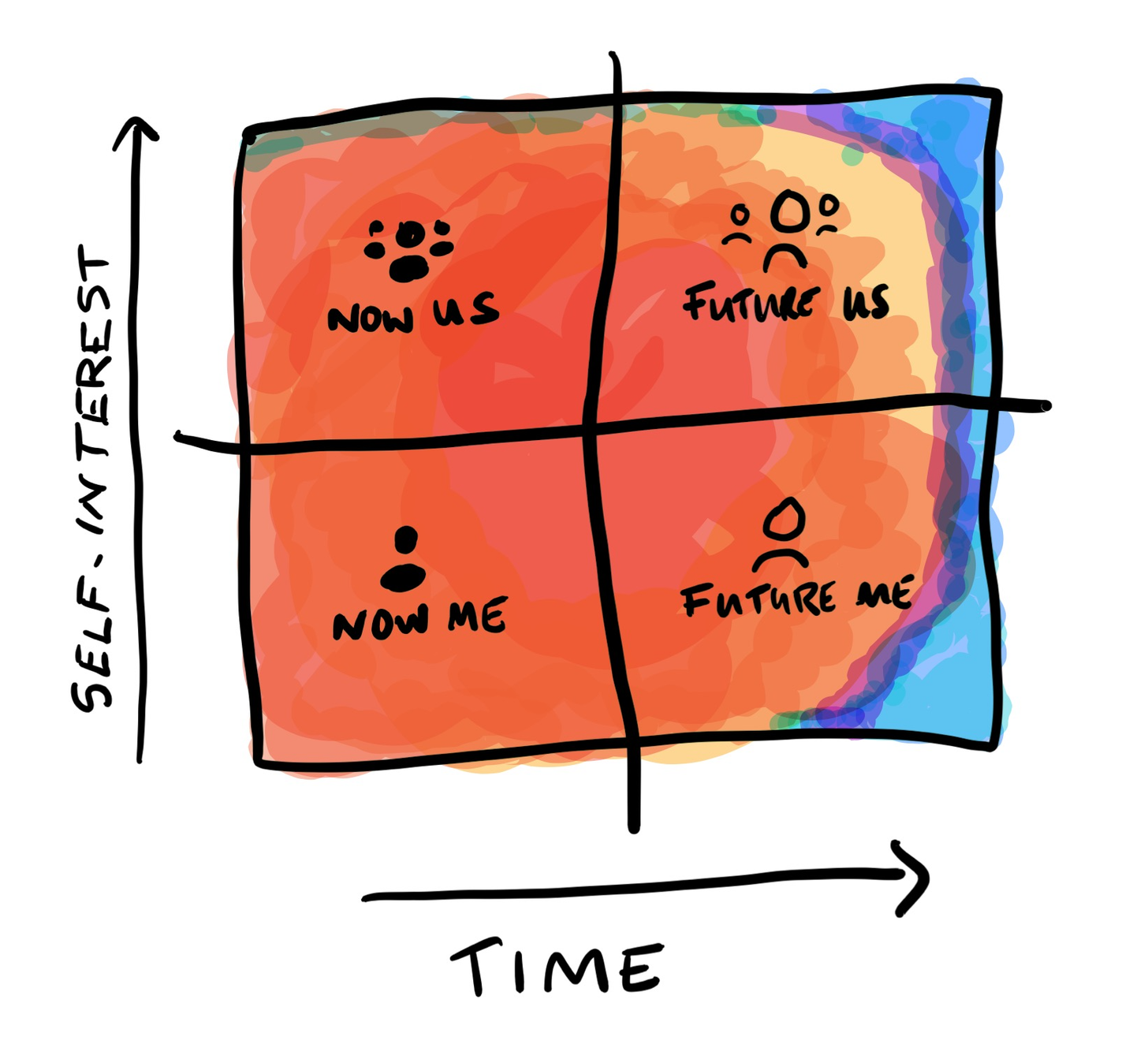
From now on things will be described in terms of the times Before Corona & After Corona--Right now we are in neither. This is the threshold time, the liminal time where everything is reorganized. Every small & big action now opens or closes possibilities of what the future holds.
— nora bateson (@NoraBateson) March 30, 2020
Active awareness in a crisis
What does it mean to have active awareness in a crisis? It means viewing the event as not just something to survive, but as a new reality in which goals and needs must still be met.
Two examples.
In her 2007 book Shock Doctrine, Naomi Klein explores how companies and governments have used crises to advance their interests. Under the fog of emergency they’ve seized land from indigenous people, pushed through totalitarian rules (as happened in Hungary this week), and found other ways to use the crisis to do what would otherwise be much more difficult. Klein calls this “disaster capitalism.”
On the flipside is a famous crisis: when someone poisoned Tylenol bottles in 1982, killing seven people. When news broke, the makers of Tylenol didn’t play down the crisis or declare they had it under control. Instead they pulled every bottle of Tylenol from shelves and offered to replace any bottles people had already bought (at a cost of more than $100 million). This crisis moment demonstrated their core values and kept the brand alive (despite many writing its obit).
Though at either end of the moral spectrum, Shock Doctrine and Tylenol are both examples of active awareness in a crisis. These institutions had an active awareness of their larger goals, and continued to pursue them in the post-crisis state. For Shock Doctrine’s offenders the goals were money and power. For Tylenol the goals were public health and regaining trust.
In our current crisis the quarantine is the passive response. The steps China and South Korea have taken to manage the epidemic through wide testing are examples of an active response. Without that second step, the virus will hold society under house arrest indefinitely.
Active awareness isn’t just critical for nations and organizations. People need it, too.
Here’s a quick thought experiment.
Imagine it’s April 2022. The lockdown is finally over. You walk out of your house elated. The worst is finally behind us.
It was a tough time. Like everyone, you lost someone you love. Still, you feel especially grateful because you made the most of the experience, all things considered. How? By making sure these three things were always true…
So what are those three things?
This thought experiment develops your active awareness by asking you to step into your Future Me self and look back from the future. When I did this, my Future Me answered:
- Caring and providing for my family
- Making the lockdown and homeschooling a fun/epic family adventure
- Focusing my work time on a single project
Since coming to these answers I shifted my time and energy. Even while I’m doing the day to day, I’m inching forward on larger goals. My actions have purpose. My time has meaning.
Academic peeps: I've lived through many disasters. Here is my advice on "productivity". First, play the long game. Your peers who are trying to work as normal right now are going to burn out fast. They're doomed. Make a plan with a longer vision. /1
— Dr Aisha Ahmad (@ProfAishaAhmad) March 18, 2020
The Great Reset
From the start my wife has called this “The Great Reset.” The moment when we would connect with the larger Us of our families, neighborhoods, shared humanity, and even with ourselves.
You can imagine what such a moment might look like. A tech-scientific-logistics Olympics as the world unites against a shared enemy, fully activating our global consciousness for the first time. As the world watches from their homes, we all discover a new appreciation for how interconnected we all are.
This timeline is possible. We’re still at the beginning of the crisis. But this won’t just magically happen. Things won’t get so bad or amazing that there’s some Big Bang of Wokeness where everyone changes their minds to your preferred political preferences.
During the early stages of the crisis in the US we can see how deeply our systems are biased towards financial value (as my book argues). Some politicians have suggested that dying for America’s free market system is a form of patriotic sacrifice, like giving your life in war. In which case most small businesses are on the beaches of Normandy right now. Hundreds of thousands of them will close in the coming months while Wal-Mart and Amazon hire a quarter-million new workers. The same day markets learned 3.3 million Americans lost their jobs, stocks were up 6.6%.
But it’s not all bad news. The other day I spoke with a CEO who said the crisis was giving them and their team newfound purpose. She’s experiencing a personal awakening, finding the work the most meaningful it’s been in ages. I’ve heard from a number of people who feel the same.
There are lots of little things too.
It’s weirdly nice knowing where everybody is all the time.
We’re talking to family and friends more than ever.
Twice last week we traded cookies for homemade sourdough bread with a friend across the street. We swap a yellow pot with a surprise dish inside back and forth with a friend who lives walking distance away. We buy delicious Chinese and Korean home food from a woman who accepts payment via Venmo and who leaves the food in tupperware on a bench down a dirt road in a California canyon. We started planting a vegetable garden.
Every night the three of us have a five-song dance party, moving freely around the house, feeling liberated by the volume and the darkness. Or you can dance with neighbors in front of your houses or on balconies, as keeps happening around the world.
Compared to the immensity of what we face and what we’ve lost, these positive changes sound puny. They might be. Getting people to lock themselves in their homes with an invisible killer on the loose was the easy part. The hard part is finding and capturing the killer so the hostages can go. This extremely difficult task is what Americans are relying on Donald Trump’s administration to execute.
Yikes.
I digress. And a particularly unhelpful digression as we mistake staying up on every breaking news alert for having an active awareness. It’s not. The news distracts us from our actual needs. Being informed is good, but being over-informed turns us into passive receptacles of opinions rather than actors on our own.
Our best tool in this crisis? Active awareness. Everyone has access to it. It doesn’t cost anything to use. Practicing is simple. I grow mine by meditating and making a weekly bento. It doesn’t take much.
Without active awareness, we’re prone to fall back on our old patterns. In a post-crisis world this is especially costly because the old ways no longer work. This is the beginning of a new era. Be ready.
In the near future this pandemic will pass and we'll have a huge opportunity to unite and transcend as a better, kinder, more sympathetic society who truly understands the meaning of "we are all in this together." Until then, sending so much love and health and to you all.
— Mark Duplass (@MarkDuplass) March 12, 2020
Linknotes
1.
This sobering New Yorker piece shows how the lack of a Presidential response has forced states and cities to take the lead and now compete with one another for medical equipment. This is a massive failure of leadership that’s taking lives, causing unnecessary harm, and is in line with the larger conservative goal of shrinking government through delegitimization (as this New Republic piece explains).
The thought I can’t shake: doesn’t the lack of a federal response make hard borders between US states a real possibility?
To emerge from our homes in a pre-vaccine world — as is happening now in South Korea and China — a society needs coordinated tracking and control of the disease; a massive, universal testing infrastructure; and quarantine sites for people to recover from infection.
I can picture many nations and some American states and cities implementing this. But nationwide in the US? Hard to imagine for a lot of reasons. But if one state is testing and tracking and the state next door isn’t, wouldn’t hard militarized borders between them eventually become necessary? Things like this are already starting to happen. I fear this may be another new normal we’re headed for.
2.
This piece with restaurateur Tom Colicchio on shutting down his restaurants because of coronavirus speaks for the pain many small business owners are going through. This video shows how many people are in need after losing their job through no fault of their own over the past month. Brutal.
3.
One of my closest friends is the owner of a coffee roaster in rural Virginia called Red Rooster. Times are tough but thankfully his roaster has a great online presence and an even better reputation. It’s where I order my coffee and so should you.
4.
Last issue I wrote about how the internet has made us all neurons in a larger collective consciousness. Now a startup is using human neurons as computer chips.
5.
Quarantine recommendations:
Recipes
- This ratatouille
- This cauliflower gratin (yum!)
- You?
Parenting ideas
- Maintain your old morning school routine to start the day. We still get dressed, walk down the street as if going to school, then come back and pretend our house is school. Fun.
- Paper airplane golf (seeing how many throws for your airplane to reach another object in the room/yard).
- Counting the change in the change drawer is a good way to do math and spend a morning.
- Same for counting foreign bills/coins.
- Organizing books and records teaches the alphabet and accomplishes… something.
- Others?
Listening
- I was on The Stoa podcast this week talking about COVID-19. Listen here.
6.
Here’s a new mix made especially for you. It’s called “We’ve Got Time.” Great for filling your home/biosphere with beautiful sound as you go about your day. Tracklist:
- Ted Hawkins, “Sorry You’re Sick”
- George McRae, “I Need Somebody Like You”
- Bill Fay, “I Hear You Calling”
- Black Sabbath, “Planet Caravan”
- Connan Mockasin, “Charlotte’s Thong”
- Stan Getz and Joao Gilberto, “Aguas de Marco”
- Eleanor Friedberger, “My Jesus Phase”
- Arrangement, “Coconut Mango”
- Electralane, “The Valleys”
- George McRae, “You Can Have It All”
- Linda McCartney, “Seaside Woman”
- Bob Dylan, “Wigwam”
- George McRae, “Rock Your Baby”
- Eddie Harris, “I Don’t Want Nobody”
- John Lennon, “How Do You Sleep? Takes 5 & 6”
- The Beatles, “I’m So Tired — Esher Demo”
- Allen Toussaint, “Southern Nights”
Peace and love my friends,
Yancey
The Bento Society
